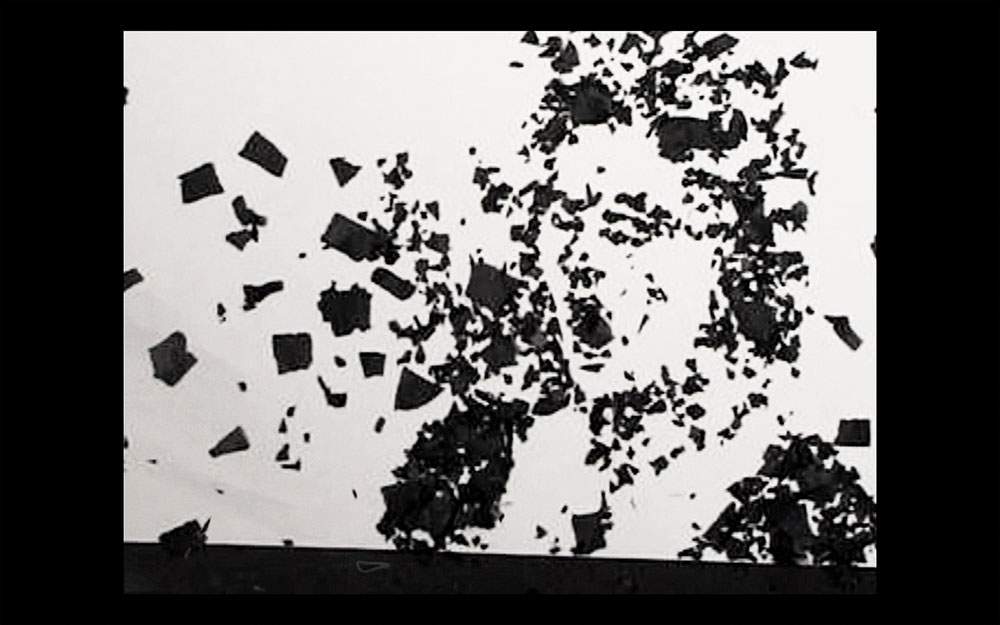The Church of San Domenico in Alba will host the exhibition William Kentridge, Breathe, curated by Carolyn Christov-Bakargiev in collaboration with Giulia Colletti, Assistant Curator, from September 21 to December 8, 2020.
The exhibition is part of the project to promote in the Cuneo area the knowledge of artistic works presented by the Castello di Rivoli Museo d’Arte Contemporanea, to offer the public an opportunity to admire works such as Breathe (Respira, 2008) and Shadow Procession (La processione delle ombre, 1999) by William Kentridge (Johannesburg, 1955), among the most significant international artists. It is also the beginning of the biennial exhibition project Expressions, which aims to investigate expressionist forms of art and its aesthetic fractures.
The exhibition is a swirling synesthetic dance, where light and sound, shadow and silence intertwine. The video works aggregate and disintegrate into molecular structures, in an impulse to destroy themselves and then re-materialize.
Along the nave and the area leading to the apse of the church, visitors encounter the work Shadow Procession, a counter-altar to Plato’s cave myth and a manifesto against the subjugation of knowledge and human oppression. Like a chamber concert, Shadow Procession is divided into three movements. As soon as light appears on the screen, shadows of some miners carrying shovels, alluding to South Africa and its mines, and of readers with open books in their hands enter from left to right. Sounds at the beginning of the video announce the rhythm and flow of the procession of shadows: silhouettes constructed and animated by the artist in collaboration with the Handspring Puppet Company, similar to those in Greek and Turkish shadow theater. Over these shadows, others proceed cadenced by the sound of the accordion. Shadows of maimed men waving crutches and striding derelict, more miners and shadows of shadows. And again shadows overlapping fathers carrying their children, a wagon carrying a hanged man, microphones, figures carrying a destroyed city on their shoulders. The last person drags with him a black curtain, which turns out to be the curtain.
Contrasting themes are addressed in the film: greed and power pitted against the struggle for emancipation, against the backdrop of the pain and suffering ofdifferent subjects.
Halfway down the nave, the work Breathe installed in one of the aisles can be seen. No longer in a carousel, but in a breath of wind, alluding to the breathing suggested by the title, the artist shatters and recomposes black tissue paper images. Like confetti, these swirl around creating very specific subjects: a singer, a megaphone, a telephone, the close-up of a mouth. In both films, Kentridge uses torn and tattered paper puppets.
His animated shorts, sculptures, installations, charcoal drawings on paper, based on the practice of erasure, and his work as a director and stage designer investigate the nature of memory and emotions, the ambiguity and complexity of the conflicts that surface in contemporary society in the age of globalization, and propose an unprecedented elegiac and at the same time dramatic vision of life, a source of perpetual change, process and transformation, always balanced between ethics, responsibility and poetry. The bloody tensions that characterized the apartheid years in South Africa and the contradictions that subsequently marked the complex journey of reconciliation are the context in which many of William Kentridge’s works were born.
“William Kentridge,” says Carolyn Christov-Bakargiev, director of the Castello di Rivoli Museum of Contemporary Art, “explores the way consciousness is formed through changing our conceptions of History and place. His is elegiac art about the possibilities of poetry in contemporary society and provides a satirical and mocking commentary on this same society, proposing a vision of life as a process of constant change rather than as a controlled world of facts. The universe of shadows he employs implies an indirect view of the world and suggests how it is better to make use of an oblique, off-center gaze than to seek absolute truth in every circumstance. The artist emphasizes that knowledge is a negotiation between experience and memory, as well as a mediation that passes through systems of communication and cultural conventions.”
Hours: Monday through Friday 3 to 6 p.m.; Saturday and Sunday 10 a.m. to noon and 3 to 6 p.m. Free admission.
Image: William Kentridge, Breathe (Breathe) (2008). Courtesy Castello di Rivoli Museum of Contemporary Art.
 |
| Breathe, William Kentridge's new animated dance in Alba |
Warning: the translation into English of the original Italian article was created using automatic tools. We undertake to review all articles, but we do not guarantee the total absence of inaccuracies in the translation due to the program. You can find the original by clicking on the ITA button. If you find any mistake,please contact us.